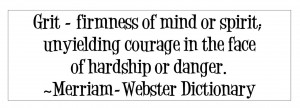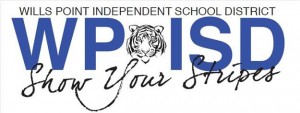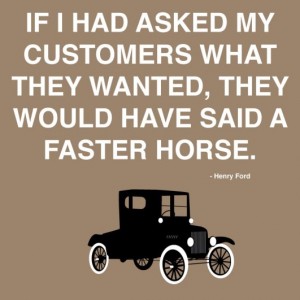. . . but they want a faster horse!
Today’s beautiful snow day has provided a break from doing education and has given me some time to think about it instead.
Teachers are rubber bands. We stand between two equally tension-stretched ends. One end is pulled by the tension of our students’ emerging futures and how to prepare them to master it. The other end is as tightly held by the traditions of the past, including not only the traditional work world but how to prepare workers for success.
The tension coming from our changing future is described by Andrea Schleicher as
“Schools have to prepare students for jobs that have not yet been created, technologies that have not yet been invented and problems that we don’t know will arise.”
The other end is strongly pulled by the educational traditions of our country’s past; a system run by agricultural schedules, factory delivery and cookie-cutter products. When tradition looks to the future, it can be described using Henry Ford’s brilliant quote:
“If I had asked my customers what they wanted, they would have said faster horses”
Let’s take what we’ve always done – just do it better.
About 3 years ago I was introduced to the video “Changing Paradigms” by Sir Ken Robinson. It jolted my traditional-thinking mind which started a spark of outside-the-box thinking. It is hard to begin thinking differently when all you know is what you know. It’s a well-spent 11 minutes to watch. Get ready to have your mind challenged and stretched.
Part of our problem in changing education is that teachers are in the only profession who have trained for their job their entire lives! No lawyer sits in the courtroom beginning at age 5 (or even 4!) observing mentors for successful future closing arguments. Young Doogie Howsers aren’t present in the doctor’s offices learning how to deal with patients or manage offices. However, teachers’ understanding of education, both delivery and content, do begin at that tender young age. We have been indoctrinated by traditional thinking our entire lives! That’s the real stronghold of both the educational system and the teacher, Only passion for change from both will break through. There are always new programs and ideas, but if the teacher doesn’t have a passion for preparing students for their futures – all the programs and training are in vain. We need our future-minded teachers who are “islands of excellence” to spread into continents throughout our districts.
Sir Ken Robinson stated it well: “Education can be encouraged from the top-down but can only be improved from the ground up.”
One of his concepts that really challenged me was that students shouldn’t be grouped merely by their birthdays. Wow. I hadn’t even considered that before. How would that change learning – and provide students with real world type learning from one another? Last week I read to a PreK class for Dr. Seuss’ birthday. Adorable 4 year olds sitting in perfect rows on their reading mat – so polite and anxious. On the 2nd row was a little boy who not only answered all my questions about Dr. Seuss, but even extended the rhyme scheme as I read. He did it quietly – as if he already knew at 4 that he was different from the others around him. What if he had some opportunity in his day to be around older children and could expand his thinking – rather than whispering it among his age peer group?
State and federal goals to empower student learning are based on Partnership for 21st Century Skills (P21). These work-force supportive skills include:
- critical thinking
- problem solving
- creativity and innovation
- adaptability
- collaboration
- communication (written, oral and blended and advanced media)
- information sourcing and media literacy
- self direction and self assessment
- application of technology to workflow
In other words, rather than learning about technology, which has been the mainstay of education for many years – it should now be application of technology in all areas of learning. That application is done through real work.
Community partnerships available to students of all ages.
Mentor programs, locally based as well as remotely using communication technology
Tackling authentic issues
Collaborating with students in the classroom and around the world on common problems
Wrap all those opportunities in struggle. Our future workers need to be confident at adapting and not simply looking for a single right answer – but finding the best answer among many options. There is so much wrapped up in this journey – determination, tenacity, resilience and gumption. Those are the true work-a-day skills that students should be learning through the real-world work they do in school. My favorite quote explains the most highly sought after skill:
“The illiterate of the future will not be those who can’t read and write. It will be those who can’t learn, unlearn and relearn.”
How are we preparing the kids for that?? An actual example of that quote we’ve all experienced is getting a new cellphone. Everything you knew so well is no longer valid. You start from scratch. Your confidence level is shot. You truly have to look at everything in a different way. Welcome to 21st century work and life!
Reading/writing and math skills are certainly important. But better to learn them the way humanity learns best – by doing – not by isolated practice. The focus on testing for these skills, at the expense of those that will be required in adult life needs an overhaul. How better if students left high school guaranteed with the skills in this graphic?
If you’re curious about the role these skills play in our future-world, read Daniel Pink’s book A Whole New Mind; Why Right-Brainers will Rule the World. It should be required reading of all educators and high school students.
For teachers to educate for the future, we must exist in it ourselves. That same list of P21 skills students needs to describe our own way of learning – where we live. Take each bullet and self-assess yourself. Gone are the days of all-day, comprehensive staff development. Teachers need to be active on Twitter, giving and receiving targeted, practical insights. We should actively collaborate with teachers down the hall and who are in other parts of the country. Teachers need to have blogs, not only to reflect on their own practice but to share with others. We need to value cross-curricular work – talk to art and music teachers about integration into your subject. We need to adapt, have resilience, tenacity and gumption.
In my district, GRIT is exemplified by the motto Show Your Stripes. We’re teaching and modeling how it applies to all areas of our lives.
Our authentic, real-world learning community, including students and teachers, will walk together down the exciting, but unknown, 21st century path. But we won’t be simply riding a faster horse. We’ll adapt and master whatever the ride.




Interesting the different methods of attempting to accomplish the same goal. I think what the children need to learn is how to learn which basically is what you were saying. Giving them a rich supply of great literature from great thinkers will help them build the vocabulary, empathy, historical foundation and literary skills to not only learn anything they may need or want to learn in the future but will enrich their lives at the same time.